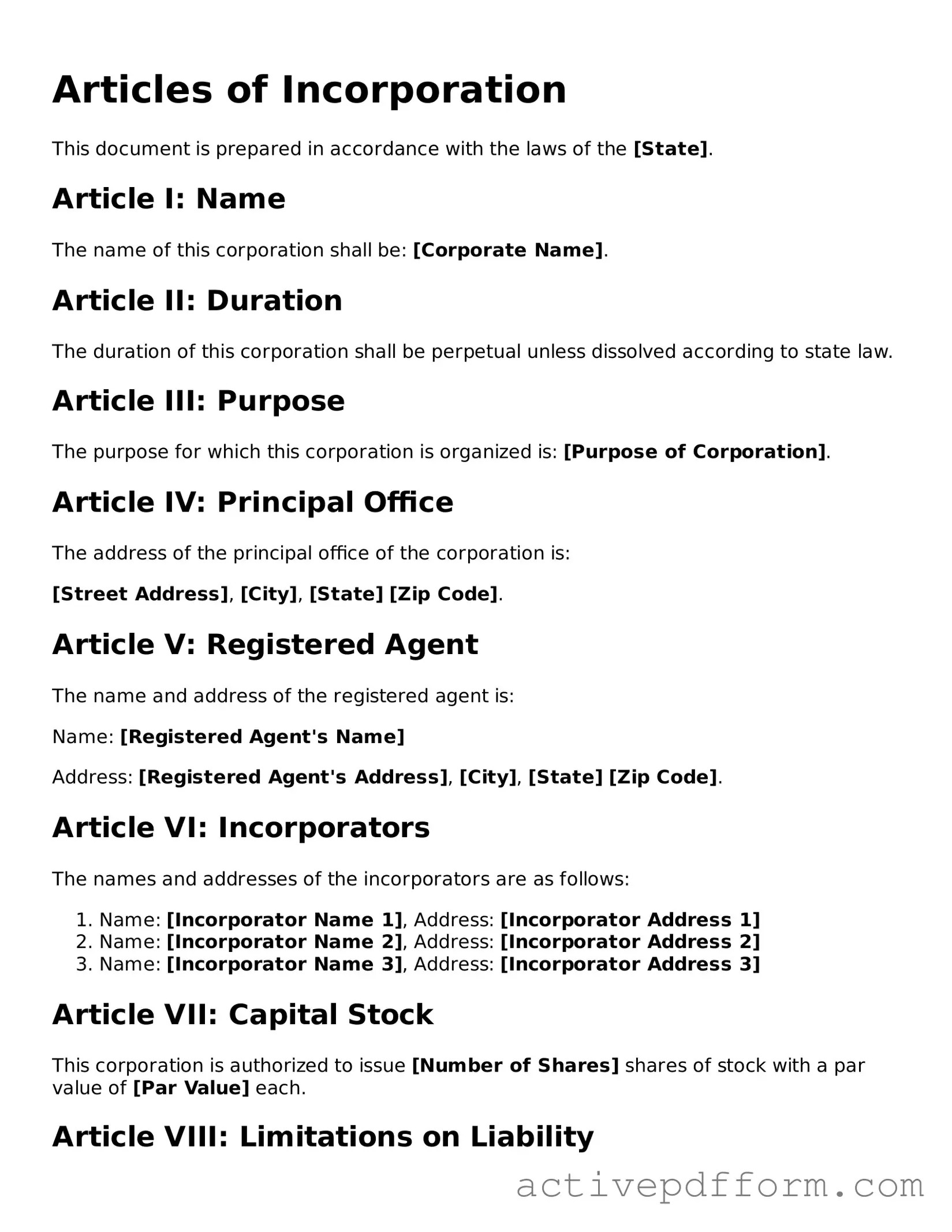Articles of Incorporation
This document is prepared in accordance with the laws of the [State].
Article I: Name
The name of this corporation shall be: [Corporate Name].
Article II: Duration
The duration of this corporation shall be perpetual unless dissolved according to state law.
Article III: Purpose
The purpose for which this corporation is organized is: [Purpose of Corporation].
Article IV: Principal Office
The address of the principal office of the corporation is:
[Street Address], [City], [State] [Zip Code].
Article V: Registered Agent
The name and address of the registered agent is:
Name: [Registered Agent's Name]
Address: [Registered Agent's Address], [City], [State] [Zip Code].
Article VI: Incorporators
The names and addresses of the incorporators are as follows:
- Name: [Incorporator Name 1], Address: [Incorporator Address 1]
- Name: [Incorporator Name 2], Address: [Incorporator Address 2]
- Name: [Incorporator Name 3], Address: [Incorporator Address 3]
Article VII: Capital Stock
This corporation is authorized to issue [Number of Shares] shares of stock with a par value of [Par Value] each.
Article VIII: Limitations on Liability
No director shall be personally liable to the corporation or its stockholders for monetary damages for breach of fiduciary duty. This provision does not eliminate or limit the liability of a director for acts or omissions not in good faith or that involve intentional misconduct or a knowing violation of law.
Article IX: Amendments
These Articles of Incorporation may be amended in accordance with the laws of the state of [State].
Incorporator Signatures
IN WITNESS WHEREOF, the undersigned incorporators have executed these Articles of Incorporation as of the [Date].
Signature of Incorporator 1: ___________________________
Signature of Incorporator 2: ___________________________
Signature of Incorporator 3: ___________________________
